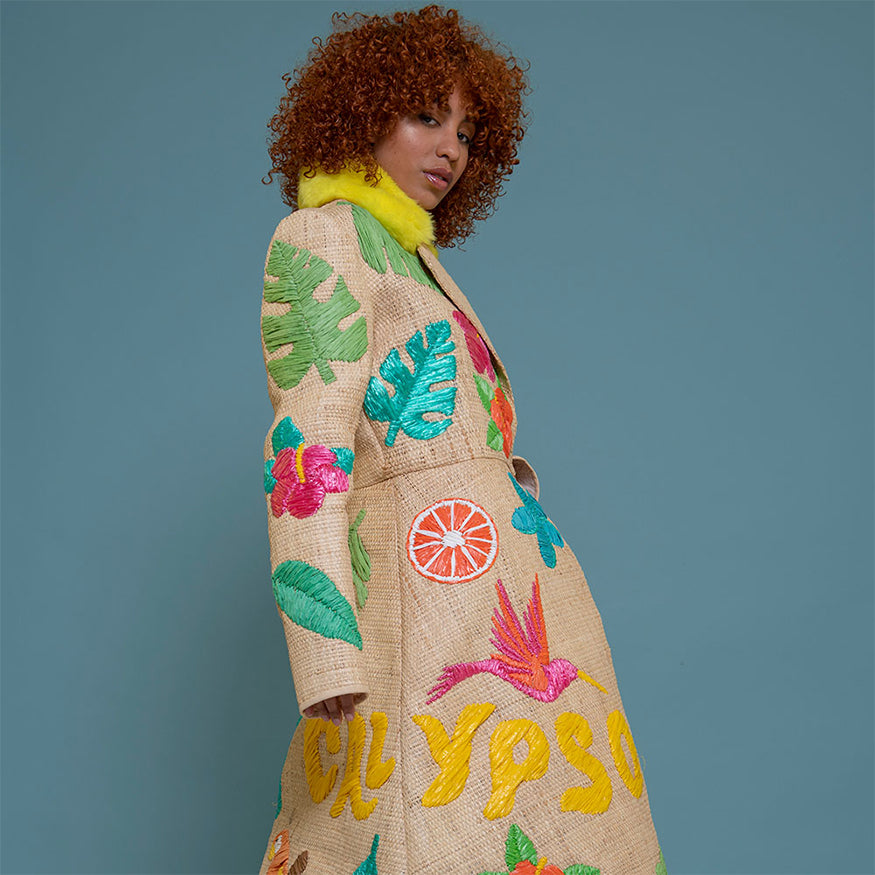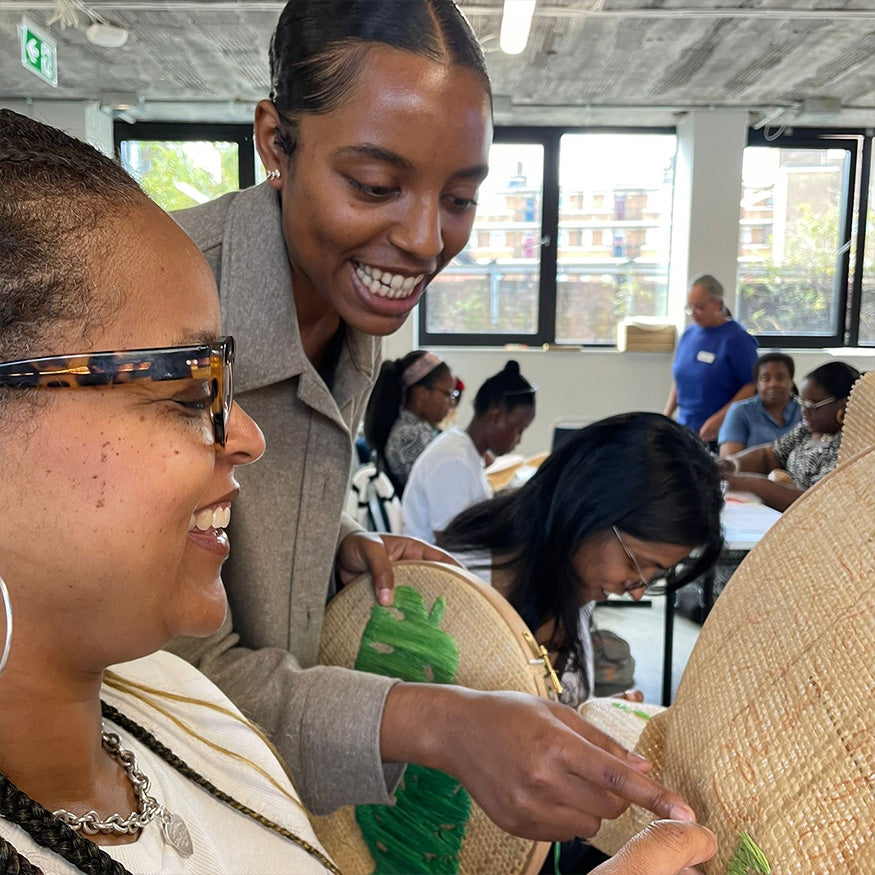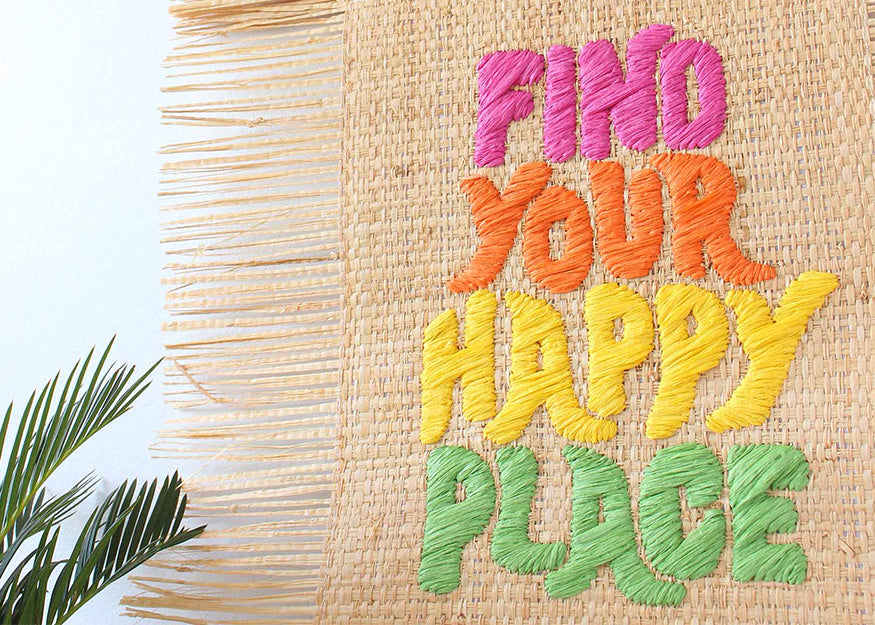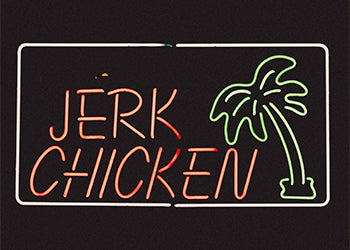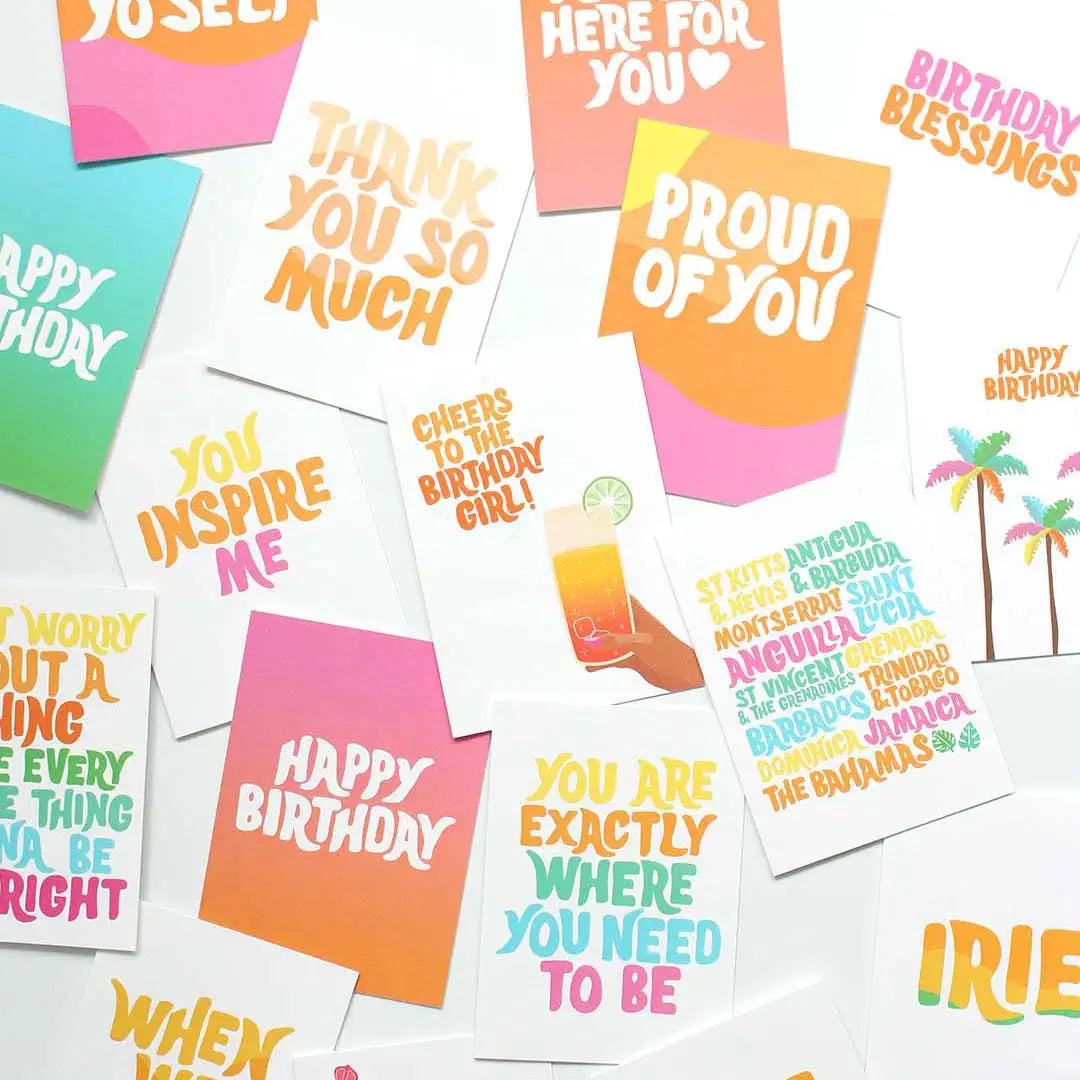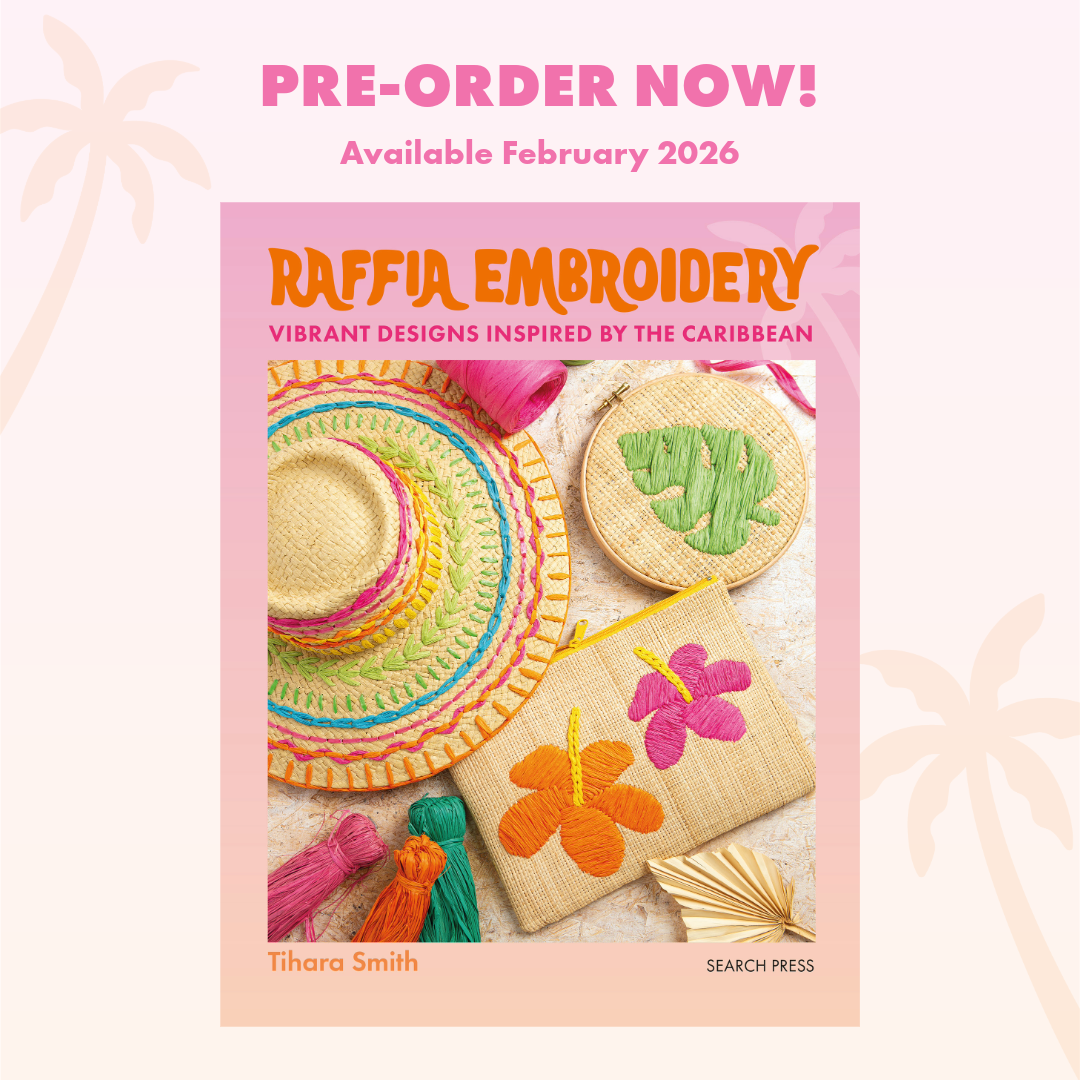Get 10% off with code:
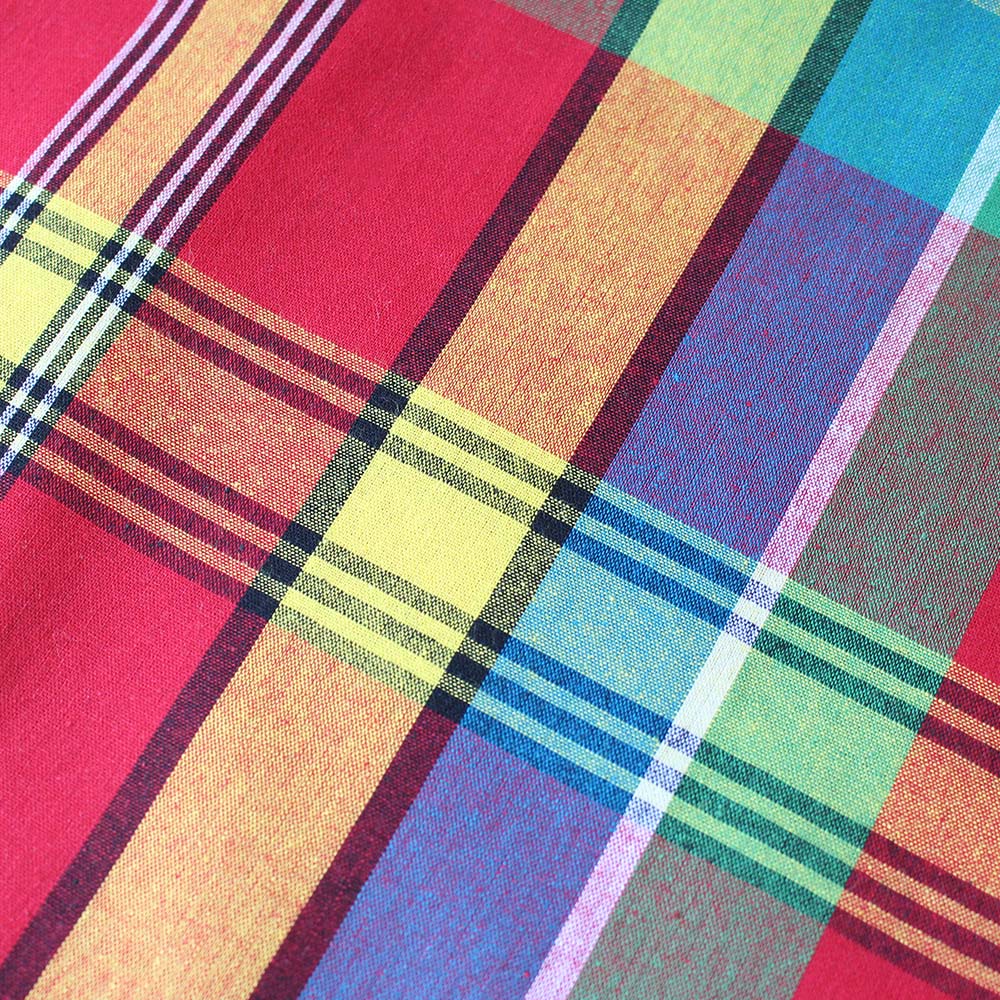
In October 2024, I had the pleasure of attending the Connecting Threads: Fashioning Madras in India and the Caribbean symposium at the V&A Museum. The event brought together researchers, designers, and artists to explore the fascinating history of Caribbean Madras fabric - from its origins in South India to its powerful cultural significance across the Caribbean.
The Connecting Threads project is a collaborative digital history project dedicated to amplifying the contributions of Indian weavers and African Caribbean consumers to global histories of dress, shifting the narrative away from colonial and Western markets. This project is led by faculty at University of Edinburgh (UK) and George Mason University (USA). With the main partner institution as the Victoria & Albert Museum .

About the Day
The symposium brought together various speakers that included curators, academics, artists, craftspeople and designers to explore the history of Madras textiles. We were introduced to the Connecting Threads project and its digital resources, followed by insightful talks on the textile’s journey from South India to the Caribbean. Highlights included presentations by Dr Steeve Buckridge, Professor of African and Caribbean History, and Dr Jonathan Square, Assistant Professor of Black Visual Culture, whose work connects fashion and identity across the African diaspora.



Throughout the day, we were able to engage with Madras fabric, examining 18th-century and modern handkerchiefs under the microscope with master weaver Ulaganathan Sundaram, and watching a lungi wrapping demonstration. An object study of 18th-century Grenadian dolls, led by Suelin Low Chew Tung, offered an interesting glimpse into historical Caribbean dress. We also enjoyed a Caribbean Madras fabric headwrap demonstration by designer Regal and concluded with a panel on the future of Madras, along with a keynote by Professor Carol Tulloch.
What is Madras Fabric?
Madras fabric is a lightweight, cotton textile known for its colourful checked or plaid patterns. Traditionally woven in South India, especially in the region around the city of Madras (now Chennai), it has been produced by artisan communities for centuries.
The checked design is often through to be linked to Scottish tartans, however similar patterns known as kattam (‘checks’ in Tamil) and kodu (‘stripes’) were already part of South Indian textile traditions long before.
Madras handkerchiefs are large square cloths, they are usually woven in plain weave, in lengths of multiple handkerchiefs at a time. Each one is separated by its own borders, measuring about a 91cm square. These became one of the most widely traded forms of the fabric.

The Global Trade of Madras
By the 18th century, Madras textiles were being exported from India to regions across West Africa, Europe, and the Caribbean.
The first recorded shipment of ‘Madras handkerchiefs’ to West Africa occurred in 1739. The cloth soon became part of the Atlantic trade network, especially along routes connected to the transatlantic slave trade.
In the 18th and 19th centuries, Indian cottons became so fashionable and valuable that European slave traders were able to sell them in exchange for human beings. Between 1700 and 1750, over one million enslaved West Africans were forcibly transported to the Americas. Their tastes created a new market for Indian cottons in the Greater Caribbean, a region that is centred on the Caribbean islands but culturally includes surrounding coastal territories of south-eastern United States and northern South America.
By the 1770s, French-Caribbean markets showed strong demand for Madras fabric. It was traded and worn widely throughout the Greater Caribbean. By the 1790s, the Madras handkerchief trade in the Caribbean had become very profitable, and ‘traders competed to supply it with the most fashionable styles’.
Madras Fabric in Caribbean Fashion
In the Caribbean, Madras became a popular material, worn by both free and enslaved African Caribbean people, although it became particularly associated with slavery. African workers had already integrated Madras fabric in their customary dress, and they retained it throughout enslavement, often obtaining it from local markets using what money they could earn for themselves.
Despite colonial restrictions on dress and personal expression, Madras fabric was used to create distinctive styles especially among women, who fashioned elaborate headwraps, sometimes using multiple handkerchiefs. These styles varied by region and were known by various names depending on the region such as tignon, bandana, tét maré, and coiffe créole en madras.
Madras handkerchiefs were worn by both men and women also draped over the shoulders and tied around the body as well as wrapped round the head. The African Caribbean consumers used Madras to style themselves based on their own tastes in a society which tried to deny them dignity.
Sumptuary laws in the 18th and 19th centuries attempted to limit what people of African descent could wear. In response, Madras fabric became a way to express identity and pride, turning the Madras handkerchief into their own luxury fashion.
Rebecca Snagg’s Dolls
At the Connecting Threads symposium, we learnt about a notable example of Madras fabric in Caribbean history through a set of 18th-century Grenadian dolls. These dolls are believed to have been made by a partially freed woman named Rebecca Snagg. The dolls are dressed in beautifully made miniature garments made from Indian fabrics, including checked Madras headwraps. The style worn by the dolls are thought to be what was fashionable in Grenada in the late 1700s.


Not much is known about how enslaved African Caribbean people made their clothing, so these objects offer rare, physical evidence of the role of Indian textiles in the clothing of enslaved African Caribbean people. They are currently housed at the Bristol Museum.
Madras Around the World
In addition to its use in the Caribbean, Madras fabric has appeared in various global fashion contexts from ceremonial garments in Nigeria, where it is known as injiri or George to the preppy style of American sportswear.
Madras Fabric in Nigeria
For the Kalabari people of southern Nigeria, the cloth is nearly sacred. The fabric reached West Africa with Portuguese trade in the sixteenth century, where it became especially popular among the Kalabari and Igbo peoples in the region of present day Nigeria. Used for head scarves and wraps, it also came to have ritual value among these communities, featured in important ceremonies, for example those surrounding births and deaths.
Madras Fabric in North America
Madras is a staple in American sportswear and the ‘preppy’ style and culture of the United States, once known as ‘Ivy Style’. The fabric become so linked with this subculture, that it was featured on the cover of The Official Preppy Handbook in 1980. Although the popularity of Madras has declined significantly since the end of the 1960s, it is still readily available at ‘preppy’ retailers like Tommy Hilfiger, Ralph Lauren and Brooks Brothers.
Caribbean Madras Fabric Today
Caribbean National Dress
Today, Caribbean Madras fabric remains an important part of cultural dress in the Caribbean. It forms part of the official national dress in countries including Saint Lucia, Dominica, Jamaica, Antigua and Barbuda, Martinique, and Guadeloupe.
Contemporary Caribbean Fashion
A new generation of fashion designers in the Caribbean are redefining Caribbean Madras fabric through their fashion designs and styling. A great example of this is seen in the US Virgin Islands where Regal of Designs by Regal expresses pride for Caribbean heritage using Caribbean Madras fabric in their designs.

How Tihara Smith is inspired by Caribbean Madras Fabric:
Whilst researching for my graduate Windrush Collection, I learned more about Caribbean Madras fabric. Although I had come across it growing up, I didn't know much about it, so I was excited to learn more and ask my Grandad about how Caribbean Madras fabric featured in St Lucian culture.
I was inspired by the checked pattern of Caribbean Madras fabric to create a similar design with raffia embroidery which can be seen on my denim jackets and the collar on the faux fur coat.
Caribbean Madras fabric continues to evolve as contemporary designers across the Caribbean and diaspora reinterpret Caribbean Madras fabric for modern fashion while honouring its historical roots – I’m excited to see what comes next!
Sources and Further Reading
Connecting Threads. Read More
The Fashion and Race Database: Madras Fabric. Read more
MAP Academy: Madras Checks. Read more
Kalabari Tribe and it's Connection with Madras Fabric. Read more
Sign Up to the Newsletter 🌴
Brighten up your inbox and explore Caribbean culture with me! Sign up for our newsletter and get curated stories and discoveries celebrating Caribbean culture and the diaspora delivered straight to your inbox, plus enjoy a 10% discount on your first order! Don't miss out - subscribe below ✨
